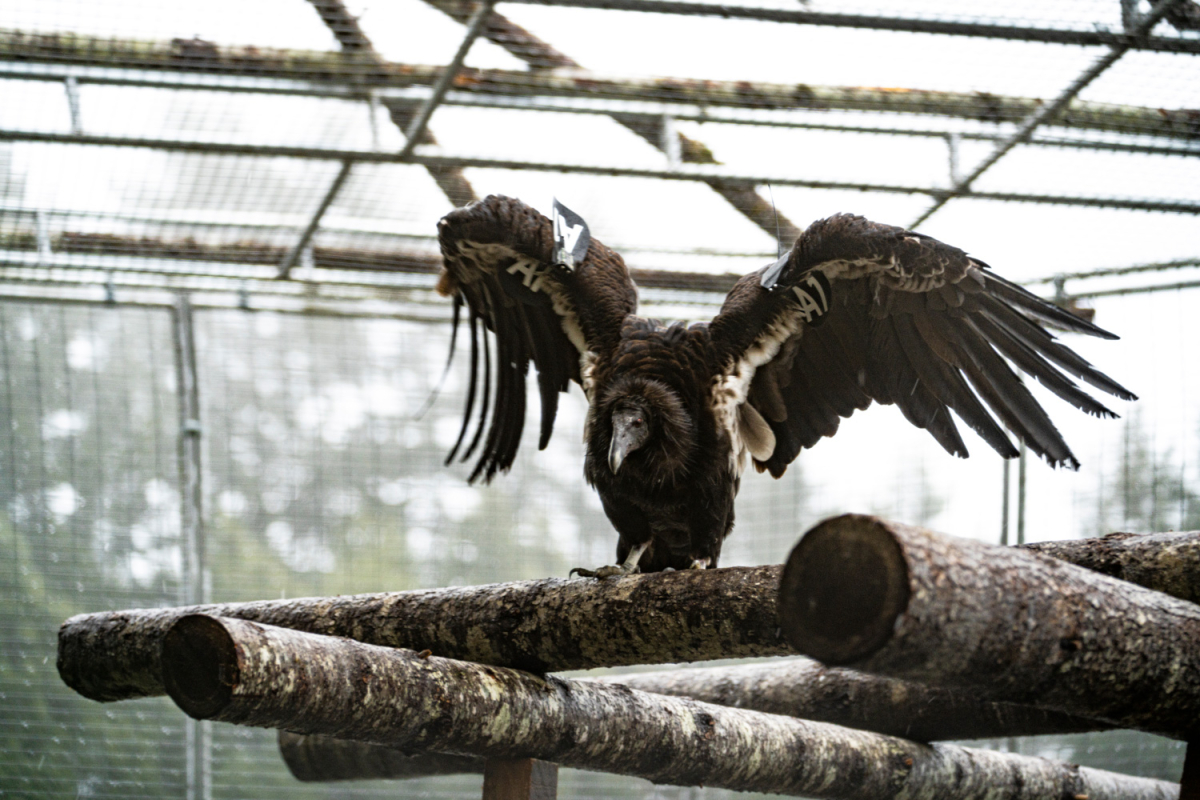Support strong Canadian climate journalism for 2025
This story was originally published by High Country News and appears here as part of the Climate Desk collaboration.
A recent study published in Environmental Science & Technology examined the presence of DDT-related chemicals in California condors, or preygoneesh, as the Yurok name them. The toxic chemicals have proven a lasting barrier to the Indigenous and U.S. agencies seeking to reintroduce the giant birds to their homelands.
DDT — dichloro-diphenyl-trichloroethane — is a powerful organochlorine insecticide used in agriculture. The largest DDT manufacturing plant in the world was operated by the Montrose Chemical Corporation in Torrance, Calif., until the early 1980s. For over three decades, the company dumped DDT and other chemicals into the Palos Verdes Shelf, and an estimated half a million barrels of DDT-contaminated sludge could still be buried off the coast, seeping chemicals into the water.
This has proven particularly harmful to the long-term health of condors, because DDT is a fat-lining molecule, meaning it dissolves more easily in lipids than in water. So if you happen to be a blubbery sea lion, swimming through DDT-polluted water, guess where that insecticide ends up? In the belly of whatever eats your blubbery carcass after you die — which could very well be a condor. And even though the Environmental Protection Agency banned DDT in 1972, and Montrose shut down operations the following decade, the Superfund site it left behind keeps the chemicals circulating in coastal food chains today.
The new study, by a team of researchers based in and around San Diego, found that coastal condors are more contaminated with DDT-related compounds than inland condors are, and that these levels “are factors to consider in condor reintroduction efforts.”
Condor reintroduction efforts, meanwhile, are underway up north, 700 miles from the Superfund site. Tiana Williams, director of the Yurok Tribe’s wildlife department in Northern California, was not involved in the study, but she undertook a separate analysis in 2008 to determine the feasibility of reintroducing condors to Yurok ancestral territory. Along with habitat conditions and lead poisoning, DDT was one of her top concerns.
Her feasibility analysis, which was supported by the U.S. Fish and Wildlife Service, was encouraging. Williams said that while DDT remains a problem for the central California condor flock, the chemical’s impacts taper off with distance from the Superfund site. She studied migratory blubbery marine animals — sea lions, gray whales, orcas — to see if they were carrying DDT up the coast, and even looked at harbor seals, which are non-migratory and didn’t show signs of DDT contamination.
“There’s a very clear downward trend in DDT as you head northward. We’re hoping there won’t be any reproductive issues in our area,” Williams said at a press event last March before the Yurok Tribe released the first condors to fly there in over a century.
Condors only produce one egg every two years, so every egg is important for repopulation. When a condor is contaminated with DDT, its egg can be malformed. “It’ll just look funky,” Williams told HCN. “But it also loses what they call the surface crystalline layer.” That’s the outer layer that gives the shell hardness and integrity. Loss of this outer layer increases the rate of egg failure. “They’ll either crack because they're more brittle,” Williams said, “or they’ll just lose all their water.”
If a condor egg does look healthy, scientists will sometimes take it from the nest, replace it with a dummy egg, and incubate the real one to ensure success. Then they replace the egg in the nest when it pips.
DDT remains a problem for other scavengers, including bald eagles, whose eggs it impacts in a similar way. But the eagle population on the Channel Islands, just off the coast of Torrance, has made a stunning recovery in recent decades. And down south, researchers for the Environmental Science & Technology study noticed a similar trend: They found about seven times more DDT-related compounds in blubbery animals off the coast of California than in animals like sea lions in Mexico’s Gulf of California. Contamination appears to taper off in a southward direction as well.
Williams said that, overall, the outlook is good for the Yurok Tribe’s birds. And the San Diego study acknowledges that DDT is a “sub-lethal” threat to condors. Still, it remains a major concern, especially down south. “The abundance is so high in Southern California,” said San Diego State University’s Eunha Hoh, one of the study’s authors. “We can’t just move on… Our ocean is so much more polluted with DDT.”
What is to be done about it remains to be seen. “Simply put, this is one of the biggest environmental threats on the West Coast,” said California Democratic Sen. Dianne Feinstein last year. “It’s also one of the most challenging because these barrels are 3,000 feet below the ocean’s surface and there aren’t many records of who did the dumping, where exactly it occurred or how many barrels were dumped.”





Comments